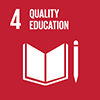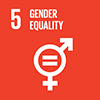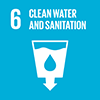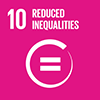June 2022 - You are accessing an old version of our website. The SDGs Voluntary Commitments have been migrated here: https://sdgs.un.org/partnerships
You will be redirected to the new Partnership Platform in 10 seconds.
June 2022 - You are accessing an old version of our website. The SDGs Voluntary Commitments have been migrated here: https://sdgs.un.org/partnerships
You will be redirected to the new Partnership Platform in 10 seconds.
Since 2006, HelpAge and local partners in response to the need of disadvantage groups in Vietnam has developed and tested the Inter-generational Self-help Clubs (ISHC) development model through the country. The ISHCs have demonstrated that they can serve as a strong mechanism for informal sustainable social protection for well-being of vulnerable households which enables higher income, better health and care, promotion of life-long learning, reduction of inequality & empowerment, and can be an effective platform to mobilize collective voice and to negotiate for rights and entitlements of disadvantage groups. The ISHC model has rapid grown over the years. By the end of 2019, 2,985 ISHCs have been successfully established in 60 out of 63 provinces/cities in the country benefiting more than 4 million people annually.
The objective is to establish and strengthen the capacity of inclusive, sustainable, and affordable community based organizations throughout Vietnam that can effectively engage with local authorities and stakeholders to improve the well-being of and promote greater inclusion of vulnerable groups in service delivery & local development.
Since 2006, HelpAge has been working with local partners and communities to establish and empower community-based organizations (CBO) called ISHCs. The ISHCs are multi-functional, inter-generational and community led CBOs. The ISHC is an innovative approach for communities to lead in the provision of essential services as well as relevant communication around those services. ISHCs are empowered to design, conduct, and manage their own development activities in partnership with local communities, service providers and authorities. One of their defining features is that they are also highly inclusive. Poor older people, women, PWD and ethnic minorities are central to improving the well-being of their households and communities. Many are active contributors to the household and local economy, though their critical roles are often not recognized or supported. The action inclusive approach aims to ensure that no one is left behind and that everyone potential is tapped into to support community development.
The ISHCs help contribute to 10/17 SDGs: Goal 1,2,8,10 and15: the ISHCs help reduce poverty and end hunger by empowering ISHCs to help poor and disadvantaged households to (a) learn ways to make their income-generating activities more productive, sustainable and environmentally friendly, (b) diversify their sources of income, and (c) access livelihoods inputs and local credit to build a foundation for productivity. Productive and diversified livelihoods (inputs) for poor, disadvantaged people have led to a reduction in poverty reduction as well as financial independence and social stability. Goal 3: the ISHCs help by (a) helping poor and disadvantaged people to improve or remain active and healthy, so they can continue to contribute to the development of their families and communities; (b) facilitating delivery of quality primary health care at the local level by developing mutual and lasting partnership with local service providers; (c) providing access to government health insurance and (d) strengthening community mechanisms to support frail and vulnerable people with homecare service. Goal 4,5,11 and13 the ISHCs help by (a) promoting live long learning from monthly talks, sharing and training at community levels on health, livelihood, environment, rights, gender, ageing and others (b) promote volunteerism within the target community (homecare volunteers, economic volunteers and etc.. (c) Conduct monthly self-help activities which aim to improve the development and livability of their communities; (4) local resource mobilization which generate local resources to help those in most need. Challenge face and how it was overcome: The ISHC approaches (1) Inclusive (target entire communities) (2) multi-focus and (3) high local ownership and sustainability were often very different to the approach of traditional donors and development organisations which initially was very hesitate to take up the ISHC approach. This initial resistant was overcome by demonstration that the ISHC works and having clear and wide evident of the ISHC model impacts.
The ISHC development model benefits the entire target communities with various social, health, economic and development interventions, with a special focus on help those most in need like women, older people, PWD, ethnic minorities and the poor. They are ones of the key stakeholders.
The development of the ISHC model has received crucial support from large number of organizations such as mass organizations or local NGOs like VAE, VWU, CASCD, government agencies including VNCA, MOLISA, MOH, local governments, international organizations and donors including HelpAge Korea, KOICA, ROK-ASEAN, EU, Age International (SANA), HelpAge International and others. This close collaboration has managed to support the rapid expansion of the ISHC model in the country and the successful inclusion of ISHC as one of target in the National Program on Ageing for 2012-2020 and in Decision 1533 of the Prime Minister approving ISHC scale up project in August 2016.
The following are results and impacts of the ISHC project:
Result 1: 2,985 community-led Intergenerational Self-Help Clubs (ISHCs) established and able to lead initiatives promoting participatory development
Indicators of success:
1. 96.4% of the ISHCs are confident in managing their activities for the improvement of the wellbeing of their members by the end of the project
2. 99.6% of the ISHC are conducting monthly self-help activities for their club and community members (this is collective action and solidarity)
3. 98.9% of the ISHC members reported that they satisfied with their ISHC activities
Result 2: Increased income for at least 60,000 disadvantaged households annually
Indicator of success:
1. 62,450 poor and disadvantaged families received IGA revolving inputs or loans in 2019
2. More than 90% of ISHC members have access to technical support in income generating activities (IGA) annually
3. Average household income increases by more than 40% at the end of two years
Result 3: Improved health and care services and health awareness for 1,500,000 people annually
Indicators of success:
1. At least 85% of the ISHC members practice regular self-care and physical exercise (at least 3 times per week) after two year of the ISHC operation
2. More than 94% of the ISHCs members received at least 2 health checkups per year, starting from year 1
3. 98% of the ISHCs are running active home care programs by the end of the project
4. More than 12,000 disadvantaged, frail or seriously disabled community members receive regular comprehensive homecare support (at least twice a week). In fact, the ISHC is by far the largest community-based care providers in the country.
5. At least 90% of ISHC members have health insurance annually
6. At least 1,500,000 people received regular health awareness information annually.
Result 4: Enhanced access to rights and entitlements for marginalized groups through new community monitoring mechanism
Indicators of success:
1. 88.5% of the ISHCs managed to organize at least two club meetings a year to discuss and provide recommendations for local programs and policies that affect their wellbeing
2. 85.2% of the ISHC were invited to participate in events/meetings/dialogues with local authorities and/or service providers annually
3. At least 20,000 households received support from the ISHCs to access their rights and entitlements through the ISHC legal support service annually
4. Community-based right and entitlement monitoring systems were established in more than 90% of the ISHCs
Result 5: Greater policy dialogue, collaboration and experience sharing between local service providers, local authorities, and communities
Indicators of success:
1. All 2,985 ISHCs have received official support and recognition from the local authorities and/or service providers by the end of the project
2. Close to 90% of the ISHCs were established with local social development funds
3. Two national policies were approved which has included the ISHC as a target (1) National Plan of Action on Ageing 2012-2020 and (2) Prime Minister’s Decision 1533 – national scale-up of ISHC
4. 60 out of 63 provinces and cities in the country have approved their provincial/cities proposal for the replication of ISHC in their province.
The main enabling conditions that help the ISHC to become national model were:
(1) ISHC members and local communities willing to take ownership of the ISHC model throughout the project and beyond,
(2) No major slowdown in the local economy,
(3) Local service providers willing to cooperate and involve ISHCs in local health, poverty reduction and welfare initiatives,
(4) Authorities willing to partner with the ISHCs and have funds to allocate to ISHCs (direct and/or indirect funding to the ISHCs) for local development initiatives, and
(5) Local (60%) and international (40$) donors have funding to support the replication of ISHCs in the country.
Specific constraints:
Political: A risk constraint is that local service providers and authorities in the target areas may not be interested in encouraging self-managed ISHCs. To counter this, the local partners have selected target villages where they have good relations with local service providers and authorities, there is strong commitment to participatory practices, and where there is broad-based community support to engage in development.
Economic: A risk/constraint associated with livelihoods interventions is the possibility of an outbreak of livestock or agricultural disease, leading to a loss of inputs. The ISHCs have worked with local agriculture extension offices to provide on-going technical support to the ISHCs. The ISHC also form IGA groups so successful IGA members can support weaker members (buddy system).
The project is innovative: Multi-focus: Unlike other models, ISHCs address multiple complex social and environmental problems concurrently, taking a holistic approach to peoples needs. They reduce the need for multiple structures, making ISHCs more effective and manageable for communities and increasing their build-in and sustainability. The approach enables communities to identify interrelations between social issues, allowing them to address them in innovative ways.
Self-managed: The model focuses on creating the skills needed to self-manage during start up, so groups are able to run themselves without external input after 2 years of establishment. This approach promotes strong local ownership, commitment and engagement beyond the project intervention.
Inclusive: targeting the entire community to promote greater local ownership and wider mutual support and understanding among the target communities. Sustainable: the ISHCs have regular self-generated incomes which enable them to be financially independent after just 2 years. More importantly, as the ISHCs get older, their income will increase which will enable the ISHC to continue to grow and develop. Finally, by having self-generated income, members are more active than in other models where they are given the money, which leads to passivity.
Affordable and scalable: The ISHC model is affordable for a low middle income country like Vietnam. For national scale-up, Vietnam would need to invest 0.04% of its 2016 GDP to established 100,000 ISHCs or one in each village in the country.
(a) Economic sustainability: HelpAge interventions fund no activities that ISHCs cannot manage or maintain themselves during and after project funding has ended. HelpAge emphasises linkages with existing government and non-government programmes is also very important for wider and long term resource mobilization. Most importantly, the ISHC has regular self-generated income that would enable them to support their activities and running costs during and after the project funding end. Since 2006, HelpAge and local partners have managed to establish more than 1,535 ISHCs in 57 provinces and cities throughout the country; all of them have demonstrated that the ISHCs can generate its own income once project funding has ended. In fact close to 70% of the ISHCs scale-up in the country were from local funds.
b) Social: The project works through community-based institutions, in collaboration with local partners, community leaders, service providers and the Local Authorities, rather than establishing standalone new community structures. The project has encouraged closer ties between ISHCs, local service providers and authorities, to continue the achievements after project completion. The strategy also emphasises the self-management of ISHCs. By learning how to manage themselves effectively and becoming empowered to seek support for their own activities, poor, disadvantaged people will assume full ownership of the ISHCs. Based on past experience the ISHCs have become legally recognised, independent and respected institutions within the community after 2-3 years. This has proven effective in promoting the long term viability of ISHCs not just in Vietnam but in many Asian countries in the region.
(c) Environmental: The ISHC development model has no negative effects on the environment. The ISHCs over the years has become a platform for raising community awareness about environmental sustainability. For example, at the project quarterly network meeting, the CBDRR and CCA activities have expand local understanding about current resources and various natural and human threats to the environment. The economic activities of the ISHCs also aim to improve productivity and diversification from traditional rural livelihoods rather than introducing new environmentally unsustainable sources of income. Health activities of the ISHCs also help villages to understand the health risks associated with environmental degradation and thus encourage action towards healthier living spaces.
(d) Policy: People led initiatives are increasingly prominent issue for the Vietnamese authorities; they are looking for doable and affordable examples such as the ISHC model to include in national policies and strategies. In recent years, the government has promoted various large national development initiatives targeting disadvantaged communities. The ISHCs results and impacts have contributed to greater awareness among policy makers of the benefit and cost-effectiveness of investing in the ISHC development model for enhancing more effective, inclusive and sustainable poverty reduction, health and care initiatives, grass-roots democracy, and policy and programme implementation and development. In 2012 the government of Vietnam has include the ISHC as a national target in the National Plan of Action on Ageing from 2012-2020 and also in 2016 the Prime Minister of Vietnam approved Decision 1533 which aims to scale-up the ISHC development model nationally.
1. Capacity building and training: The ISHC aims to leave behind community-based organizations with stronger capabilities, especially ISHCs and local VAE or VWU staff that can support them. As noted earlier, the emphasis is on strengthening durable capacity rather than providing extensive direct assistance. Even when direct assistance is provided (e.g. provision of livelihoods assets), it is intended partly to demonstrate the potential cost-effectiveness of providing small investments through ISHCs.
2. Work through ISHCs: The ISHC works through community led ISHCs for several strategic reasons. (a) The ISHC is a community-based organization which has become recognized as useful by both the government and community members. (b) ISHCs led by disadvantaged people are becoming increasingly popular due to their proven success in providing concrete and long lasting community empowerment, health, livelihood and social impacts in the target communities as well as in their replicability to a large number of needy communities in Vietnam. (c) Past experience in other Asian countries has demonstrated the effectiveness of the ISHCs as a sustainable social structure for working with older people. The ISHC allows opportunities for collective activity and solidarity among older people. (d) The informal relationships and potential joint effort between the ISHCs and the local authorities in many communities have built long lasting mutual support and respect between village authorities and the DGs.
3. Work in collaboration with local service providers and authorities: The ISHCs work closely with local authorities and service providers at all three levels, due to: (a) decentralization policies and budget allocation of poverty reduction, health and social programs and policies; (b) ISHCs need to strengthen links with local service providers and authorities in order to coordinate community activities and to promote sustainability; (c) since local government structures and services follow a similar model throughout Vietnam, any approach that successfully links ISHCs with local service providers and authorities have contributed to the viability of a national participatory ISHC approach; and (d) have created enabling environment for ISHCs and other Vietnamese non state actors to participate in local and national policy dialogue.
4. Documentation and multiplier effects: HelpAge has not only document the achievements of the ISHC approach, but also provide a model at both local and national levels to support inclusive poverty alleviation and health promotion for women, older people, ethnic minorities and PWD. The development of the ISHC model thus aims to impact not only the 2,985 target communities but a much wider audience by demonstrating mechanisms that can be used elsewhere. In addition, HAIV experience shows that surrounding communities often demand a similar project to address their needs. In this way, the action creates the potential for multiplier effects beyond the life of the project.
A. HelpAge website which as a range of materials on the ISHC development model
B. Studies and evaluation on the ISHC model: The following are international publication which have included the ISHC development model:
1. Exploratory Survey on Community Based LTC in Vietnam by ISMS
2. ISHC’s development evaluation report for Atlantic Philanthropies
3. ISHC’s Health Systems Assessment Report
4. Older People in Community Development through the OPA
5. OPA Briefing: impact Sustainability and replication
6. OPA study in four countries: Vietnam, Myanmar, Cambodia, and China
7. Putting OP first by HelpAge
8. UNFPA ISHC model evaluation report
9. ISHC development model funded by EC
10. 2016 Joint Annual Health Review (MoH)











 Start: 04 January, 2006
Start: 04 January, 2006 Completion: 31 December, 2025
Completion: 31 December, 2025